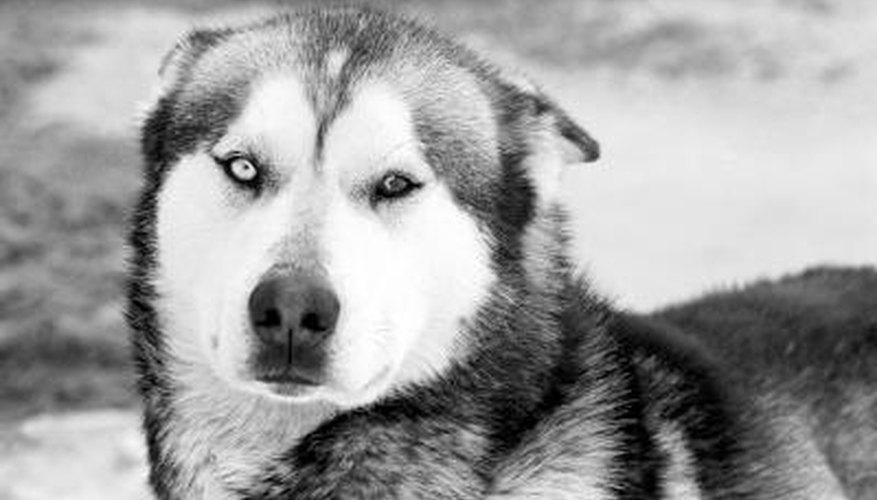Wolves and Siberian Huskies share many physical traits. Both canines have pointy ears, can come in similar coat colours, and have the common blue eyes. These canines are sometimes mixed by breeders, and sold as wolf hybrids. If you are unsure of whether or not your Siberian Husky is part wolf, there are a few things you can look for. Since there are few physical differences between the two groups, it is less likely that you will be able to spot wolf in the husky by looking at it.
Look at the Siberian husky's snout. Wolves have a slimmer snout than huskies. If the husky's snout is slimmer compared with other Siberians, it may be part wolf.
- Wolves and Siberian Huskies share many physical traits.
- If the husky's snout is slimmer compared with other Siberians, it may be part wolf.
Judge the husky's coat. Huskies can come in a variety of colours from white to grey and black. Many wolves have only a grey, white and brown coat. If the husky has a similar coloured coat, there could be wolf in him.
- Huskies can come in a variety of colours from white to grey and black.
- If the husky has a similar coloured coat, there could be wolf in him.
Look at the husky's eyes. Siberian huskies are known for having eyes that appear too close together. If your husky's eyes don't appear unusually close, it could be part wolf or mixed with another breed.
Listen to the dog's howl. Wolves are well-known for their howls. Siberian huskies don't typically howl, but rather bark. If your husky is howling, it may be part wolf.
Watch the husky's behaviour after he is 18 months old, or out of the adolescent stage. Huskies are independent and resourceful, and are known to be friendly and mischievous. Wolves, on the other hand, will display territorial, wild and temperamental behaviour. They don't respond well to inanimate objects, loud noises or new people, and are known to attack domestic animals. If your husky displays any of these behaviour patterns, it could be part wolf.
- Wolves are well-known for their howls.
- They don't respond well to inanimate objects, loud noises or new people, and are known to attack domestic animals.
